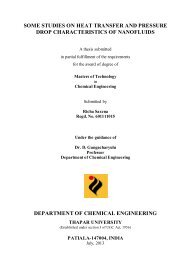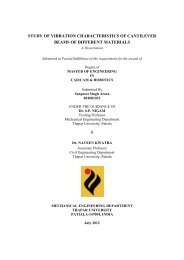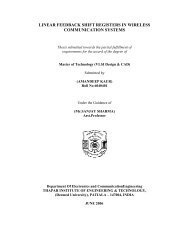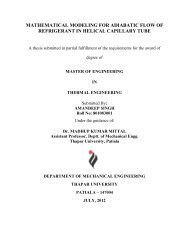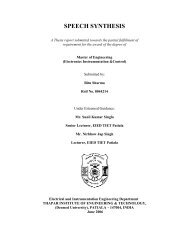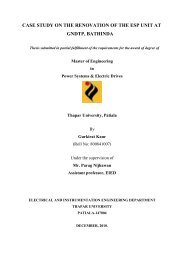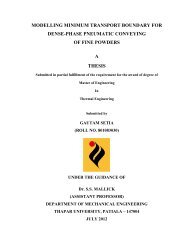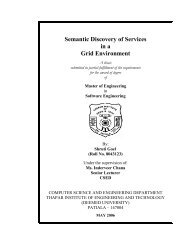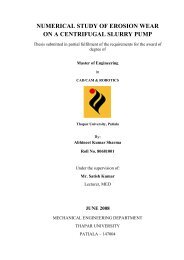from indigenous fermented foods and human gut ... - Thapar University
from indigenous fermented foods and human gut ... - Thapar University
from indigenous fermented foods and human gut ... - Thapar University
You also want an ePaper? Increase the reach of your titles
YUMPU automatically turns print PDFs into web optimized ePapers that Google loves.
Chapter II Review of Literature<br />
mannose, maltose, lactose, dextrin. Does not ferment mannitol, sucrose, salicin, glycerol,<br />
inositol, rhamnose, arabinose, xylose, raffinose, inulin, sorbitol, amygdalin, cellobiose,<br />
melibiose, melezitose.<br />
2.2.4 Taxonomic diversity of Lactobacillus<br />
The <strong>human</strong> gastrointestinal tract contains hundreds of different bacterial species<br />
(Tannock, 1995). Members of the genus Lactobacillus are commonly present <strong>and</strong> have<br />
received considerable attention with respect to their putative health conferring properties as<br />
probiotics (Goldin <strong>and</strong> Gorbach, 1992). Lactobacillus has worldwide industrial use as starters<br />
in the manufacturing of <strong>fermented</strong> milk products. Moreover, some of Lactobacillus strains<br />
have probiotic characteristics <strong>and</strong> are therefore included in fresh <strong>fermented</strong> products or used<br />
in capsular health products, such as freeze-dried powder. The use of some Lactobacillus<br />
strains as probiotics is based on studies shows that these species belong to the normal<br />
intestinal flora <strong>and</strong> the strains have beneficial effects on <strong>human</strong> <strong>and</strong> animal health (Salminen<br />
et al., 1996).<br />
Major bacterial species isolated <strong>from</strong> <strong>human</strong> gastrointestinal tract fall generally into<br />
three distinct categories. These include 1) organisms almost always present in large number,<br />
<strong>and</strong> constituting the <strong>indigenous</strong> <strong>and</strong> resident flora, e.g. Bacteroides, Bifidobacterium; 2)<br />
organisms normally present in small or moderate numbers, <strong>and</strong> part of the resident flora, e.g.<br />
Enterobacteriaceae, Streptococcus <strong>and</strong> Lactobacillus; <strong>and</strong> 3) organisms present in small<br />
numbers, probably contaminants <strong>from</strong> other regions of the body e.g. Staphylococcus,<br />
Haemophilus, etc., or <strong>from</strong> the environment, e.g. Bacillus, Corynebacterium, which constitute<br />
transient flora.<br />
More specifically, organisms of the <strong>human</strong> gastrointestinal tract include diverse<br />
bacterial genera or families, <strong>and</strong> are divided into the following three groups: 1) Lactic acid<br />
19



